Monday, September 22, 2008
Nice Site !
since i started blogging about Aircraft,it was with the aim to help people with their understanding for the giant machine;specially the Engineers.
this link can give you a much better and in depth knowledge about the maintenance/working of the machine : www.amtonline.com
will keep posting with what i know about the topic..
cheers
Sunday, September 21, 2008
Interview Tips for Freshers : Get a good Job
In today's world, one just cannot escape interviews. Getting a good job, cracking an interview in not a very big deal. When you get into a college, first thing comes to mind is about its placements. And in your final year, getting a Job is your top priority (placements starts to build up in your mind).
It is quite natural. Specially, for freshers who are about to enter this corporate world, this whole scenario seems a bit scary. But let me assure you mastering the art to crack the interviews is not so much hype. Let me describe the placement procedure for most of the companies (mainly technical and consultancies).
Firstly in most colleges of India, the company puts a restriction on basis student aggregate percentage. You need to maintain a minimum percentage to be eligible for company. Every company has its own minimum percentage requirement. Though this is in no way indication of your or companies reputation and its future prospects. Secondly, a written test is held for the eligible students. Few students are short listed on basis of their performance in the written test. Then a GD (optional, depends on company) is held. Again few students are shortlisted. Then comes the personal interview. PI ( No of Personal Interviews are also varying, different for different companies. Usually, one technical and one HR interview is held). Interviews are mostly two on one, but sometimes it can get a lot worse with five or six company guys taking on a single student. I have faced both kinds and I personally feel the latter one to be more stressful. I have talked to few interviewers, and let me tell you with the increased competition these days, their job ain't easy. To overcome their problem, student has to overcome many types to interview before they get a job. Some of types are -:
- Face interview
- Group interview
- Behavioral interview
- Telephone interview
- Panel interview
- Stress interview
Saturday, September 20, 2008
VERY HIGH FREQUENCY (VHF)
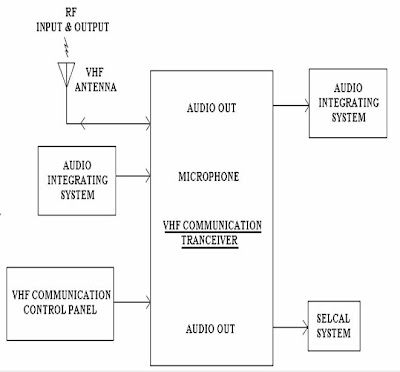
DESCRIPTION: The VHF communication system provides short-range (Line Of Sight) voice communication between:
• The Aircraft and Ground Stations.
• The Aircraft and other Aircraft.
VHF communication system transmits data in the form of codes. The frequency range allocated for commercial aviation VHF communication is 118.00 to 136.975 MHz in 25 KHz increments. The VHF communication system receives RF energy via the antenna, processes the RF and sends resulting audio to the Audio Integrating System. The VHF communication system also sends an audio signal to the SELCAL system to alert the flight crew of an incoming call. During transmission, the VHF communication system and RF energy transmitted via the antenna process the microphone audio from the Audio Integrating System.
There are two VHF communication systems installed and wiring provisions for a third, and each system contains the following components:
1. CONTROL PANEL: The control panels are located on the AFT electronic panel.
2. TRANSCEIVERS: The transceivers are located on the E2-1 shelf in the electronic equipment compartment.
3. ANTENNA: The number-1 antenna is located on the top of fuselage and the number-2 antenna on the bottom. The VHF communication system requires a primary input voltage of 27.5V DC at 1 ampere in receive mode and 27.5V DC at 6 ampere (7.5 ampere maximum) in transmit mode.
OPERATION:
• The pilot selects the communication frequency of the Airport or Air Traffic Control that is responsible for the airspace in which the aircraft is flying.
• The pilot actuated the transmitter section of the RT by pressing the microphone key.
• The pilot's voice is transformed into an electrical signal, amplitude modulated and mixed to produced a signal that is radiated from the transmit antenna.
• The receiver section of the ground station RT receives the radiated signal, filters and mixes it and then detects the modulated signal.
• A speaker or headset then transforms the modulated signal into an audio signal.
• The Airport or Air Traffic Controller replies using the same frequency.
HF COMMUNICATION SYSTEM
The HF communication system provides long range communication between:
• The Aircraft and Ground Stations.
• The Aircraft and other Aircraft.
The system operates in the 2 to 30 MHz frequency range in Amplitude Modulated or SSB mode to transmit and receive information that can be in the form of a transmitted voice or a coded digital signal. The HF system uses the skip distance phenomena to achieve long distance transmission. Skip distance transmission is most effective in the 2 to 30 MHz ranges and varies with frequency and time of day. The HF communication provides a reliable way to transmit and receive Flight Information, Landing Instruction and Voice Communication. There are two HF communication systems HF-1 and HF-2 installed in the aircraft. Each HF communication system is composed of one receiver-transmitter, an antenna coupler, lightning arrester, an antenna, a remote control unit, a microphone, a speaker or handset and necessary relays. The HF-1&2 communication systems use 115V, 400Hz, 3-phase primary power and output from 2.0000 to 29.9999 MHz or 2.8000 to 23.9999 MHz on channels spaced at 1KHz or 100Hz.
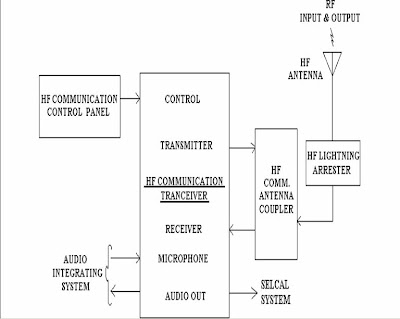 RECEIVER-TRANSMITTER (RT): The RT provides transmit signal and power to the antenna, and processes the received signal from the antenna. The HF RT operates in the 2.0000 to 29.9999 MHz range providing Upper Side Band and Lower Side Band data communication. The RT contains the following circuit, a frequency synthesizer, a receiver, an exciter, and a power supply. The transceiver may also contain circuit to monitor the VSWR of the antenna and transmission line. The receiver portion consists of the necessary circuit to receive, demodulate, amplify, and filter the received signal. The exciter contains the circuit to excite, modulate, amplify and transmit the voice or coded data communication.
RECEIVER-TRANSMITTER (RT): The RT provides transmit signal and power to the antenna, and processes the received signal from the antenna. The HF RT operates in the 2.0000 to 29.9999 MHz range providing Upper Side Band and Lower Side Band data communication. The RT contains the following circuit, a frequency synthesizer, a receiver, an exciter, and a power supply. The transceiver may also contain circuit to monitor the VSWR of the antenna and transmission line. The receiver portion consists of the necessary circuit to receive, demodulate, amplify, and filter the received signal. The exciter contains the circuit to excite, modulate, amplify and transmit the voice or coded data communication.
Remove motion/still blur from Images using Adobe photoshop
Tool used for this,is Adobe Photoshop.
Initial picture/image being used :
*click the image to zoom in.
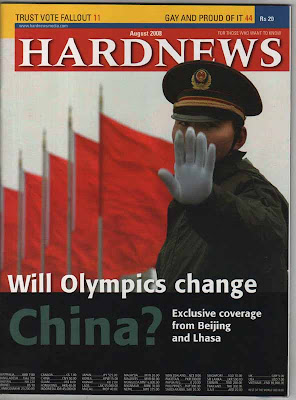
- Step 1 : adjusting the tilt of the image according to the desirability.Also used for selecting the required portion of image i.e. cropping.
*Notice the area as the border around the image ,as its removed in the next image.
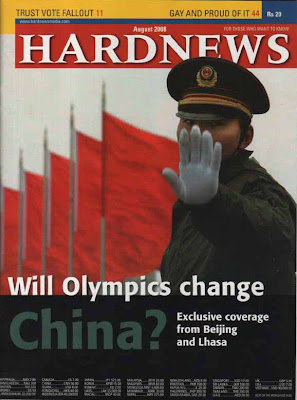
- Step 2: Image Rectification Starts now.Firstly we need to clear the Localized noise.
now set the "radius = 1 " and "threshold = 0 ",and preview the image portion.click "ok" to apply.
you won't notice a great difference but its a necessary step.comparative image would be somewhat like this:

- Step 3:Go to "Filters -> blur -> gaussian blur "
image would be something like this:
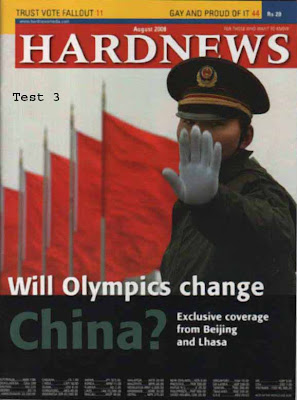
- Step 4: Go to "Filters -> sharpen -> unsharp mask "
keep " radius between 2 to 4 pixels "
keep "threshold =0 "
image is ready for final touch,it should be something like this :

- Step 5:go to "image -> adjustments -> auto contrast "
 The Results do vary from case to case.Also have used a good scanned copy for example so Differences are not too noticeable ,but it will definitely help you in the time of need.
The Results do vary from case to case.Also have used a good scanned copy for example so Differences are not too noticeable ,but it will definitely help you in the time of need.The Photoshop version used by me is 7.0 and CS2 is said be a better version,so update will come soon,may be with a better example.
Saturday, September 13, 2008
BOEING 737-400
COUNTRY OF ORIGIN:
TYPE: Short-haul, commercial transport.
POWER PLANT: Two 22000 lb ST (9980 kgp) General electric CFM 56-3b or 23500 lb ST (10660 kgp) CVM 56-3c turbofans.
WEIGHTS: Operational Empty, 73790 lb (33471 kg); Maximum Take Off, 138500 lb (62824 kg).
ACCOMMODATION: Flight crew of two and typical mixed class arrangement for 146 passengers, with maximum of 168 passengers.
STATUS: First B737-400 was rolled out on 26 January 1988, with customer delivers schedule to commence from September 1988. A total of 1925 model 737’s (all versions) had been ordered by the beginning of 1988 when production rate was 14 aircraft monthly.
NOTES: The latest version of the BOEING B737, –400, which has sold in greater number than any other airline, offers upgraded technology in comparison with the –300. It embodies a fuselage stretch comprising two plugs one of 5 feet 6 inch (168 m) forward of the wing and other of 4 feet (122 m) aft of the wing. The outer wings and undercarriage have been strengthened to permit increased landing weights. Take off weights of up to 142000 lb (64410 kg) will be available on later –400 series aircraft and it is claimed that, in 156 seat all economy layout, the seat mile costs are 7% better than those of the –300.The 737-500 is a short fuselage version for 100 to 120 passengers.
AIRBUS A320-200
ORIGIN: International Consortium.
TYPE: Short to Medium hauls, Commercial Transport.
POWER PLANT: Two 25000 lb ST (11340 kgp) General electric/SNECMA CFM 5 or IAEV 25000 lb ST (11340 kgp) CVM 56-3c turbofans.
DIMENSION: Span 111 feet 3 inch (3391 m); Length 123 feet 3 inch (3758 m); Height 38 feet 7 inch (1177 m); Wing Area 1317.5 sq. feet (12240 sq. m).
PERFORMANCE: Maximum cruise speed of 560 mph (903 km/h) at 28000 feet (8535 m); Range cruise of 520 mph (840 km/h) at 37000 feet (11280 m); Range (Maximum payload) of 2940 miles (4730 km); Maximum fuel capacity of 4468 Ls.
ACCOMMODATION: Flight crew of two and typical mixed class arrangement for 20 first class passengers and 138 economy class passengers, with maximum of 164 economy
class passengers.
Introduction
I tried but getting information on the functioning of few minute components of the aircraft is still very difficult.Hence gathered the information myself and am blogging it so that it could help somebody in need.
i would be starting with general information about the aircraft i am going to cover through this blog.
Wednesday, September 10, 2008
Windows Desktop Search 4.0
recently while updating ,i used the custom tab and just checked all software updates from windows update site.Numerous updates were installed ,however while working saw Windows desktop search tool using a lot of resources (RAM,Processor and Virtual Memory).so i tried using it,however the results were not very convincing.It kept on indexing again and again and became a resource hog.so uninstalled it,only to find that it was still very much active.
firstly,how to know?
(!) open task manager (Alt+Ctrl+Del) then click on "processes" tab (second one) and look for "wds.exe"
if its there then u too have it.
how to uninstall it ?
(!) add/remove in control panel wouldn't work as while updating somehow it misses to create the uninstaller linkup.
so how to uninstall it ?
(!)search for a file named "wds4.0_uninstaller.zip"
you will find it very easily and then just unzip to c drive and run the
c:/$NtUninstallKB940157$/spuninst/spuninst.exe
you can have any drive instead of c drive ,which i used for the example here.
and once the process is complete your problems are gone.
you may have an alternate here,
search your windows directory for "$NtUninstallKB940157$" before downloading the file,if by chance you find it then you can run the "spuninst.exe" within that directory to successfully remove Windows desktop search tool.
so thats how my problem was solved.Happy Updating..
Saturday, July 22, 2006
Computer Specifications ......continued
sorry for the delay.
These days you can't keep your computer updated as technology keeps on improving,but the funda is to maintain your computer to run smoothly.Keep your AV (antivirus) and FW(firewall) always on and updated.scan once every 2 weeks for AV,but these days problem causing stuff are the spywares/adwares/registry bugs ---
so using registry repair,spyware/adware removal tool once a week is a good option .
also using hdd's scan disk once a month and defragmenting them makes your computer run smoothly else fragmentation hinders the speed.also disabling some visual styles of XP can provide you with extra AGP ram and physical ram so your comp can work in a better way!
keep your virtual memory limited to installation drive and that too as low as possible ie manually setting the limits.
hope it helps
cheers
Saturday, July 15, 2006
Computer Specifications
Hey people, think in the ever changing environment, I should start the help page first to run your machine as smooth as possible. I am not a professional but have quite a good experience of this thing.
Specs of machine I am using:-
System:
Intel Pentium (R) 1.80 GHz
1024 MB SDRam
Intel (R) 82845 Chipset with onboard Sound Card(AC97)
52X Samsung CD-R/RW
Multi X LG DVD Combo + Writer
Nvidia GeForce 6200 series (256 MB)
Samsung (20 GB + 80 GB) HDDs
O/S:
Windows Xp Professional
Version 2002
Service pack 3
Some Softwares i use:
AVG Anti Virus Free Edition
Avast Anti Virus 4.7 Home Edition
Dumeter
(to count my net exchange data)
Advanced System Optimizer + CCLEANER
(clean IE cache, Reg repairs, useless files etc etc)
Winamp v 5.35
(but with classic skin ,keep that cpu usage in mind)
Nero 8
(The best simply)
Spybot S&D
(Security)
Windvd
(For Mpeg -4 support)
Emule
(Hehe ,you know! Best P2P Software )
Eusing Free Registry Cleaner
(Does some wonderfull things with the registry)
Thats all folks---------------
Thursday, July 13, 2006
Mukul Pandey starts blogging!
Here i am starting to blog ,blog's birth time 12 :13 AM,13th July 2006! (I S T)
Must say that Madhur's efforts on this front inspired me to do this stuff which actually is something i don't generally agree with,but he changed my mind on this one.
Big Thanks to you dude! !!! HUGS!!!
Well will get hold of this eventually and start posting some cool links,images ,and some nice and interesting posts...
so keep waiting and keep surfing!
Mukul signing off
